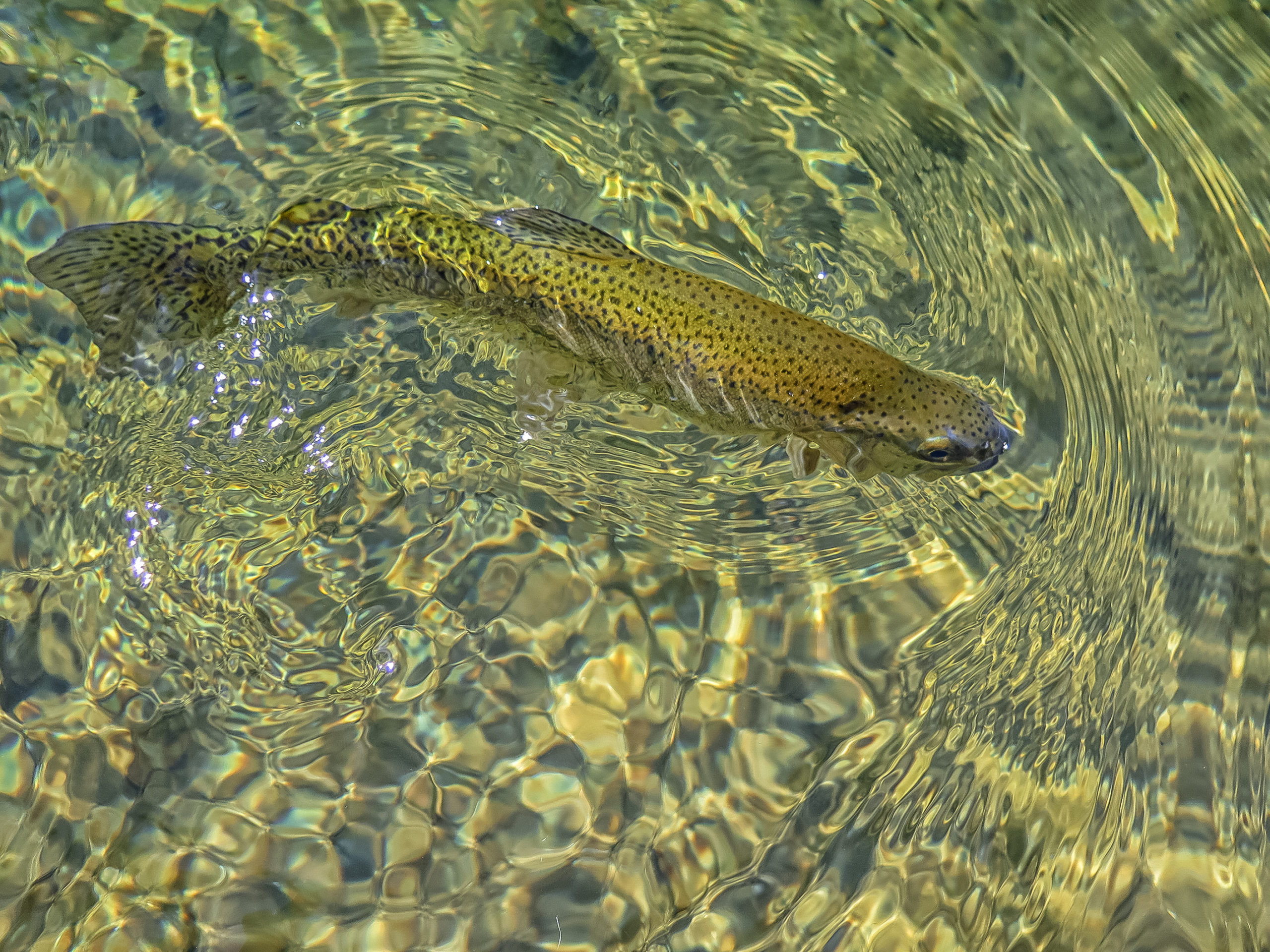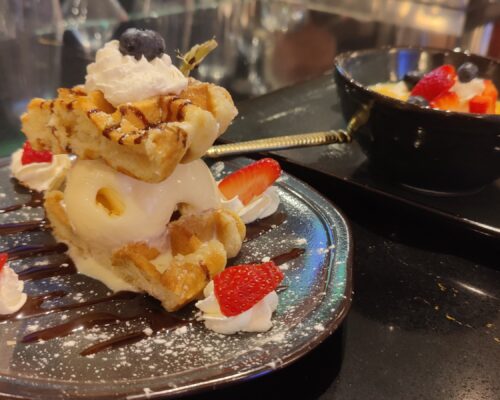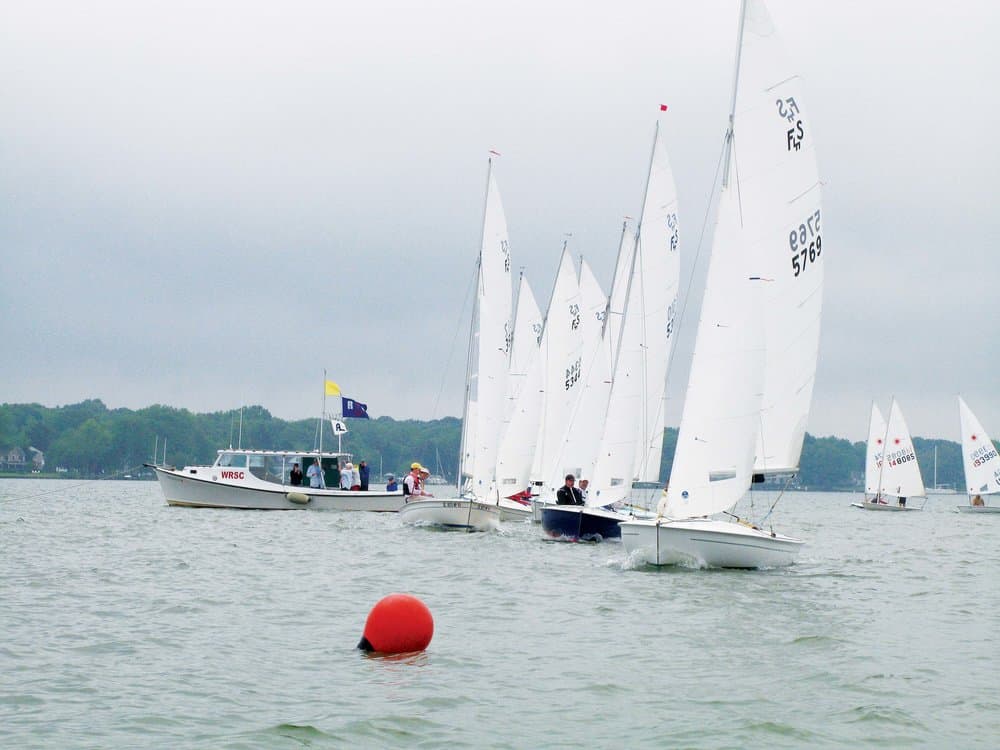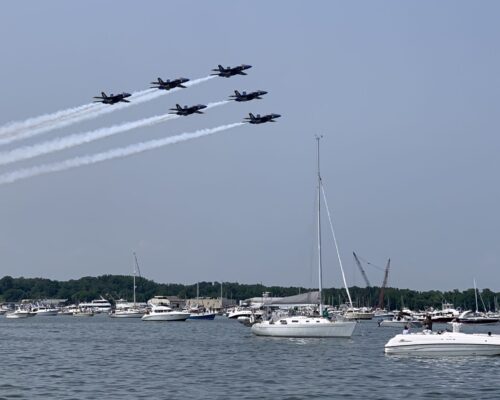Move over, Montana. Outta the way, Outer Banks. Maryland, too, wants to woo the Woolly Bugger crowd. The Old Line State has launched the nation’s first statewide trail of fly-fishing destinations in a bid to boost tourism and promote a popular pastime (one of whose delightfully named flies is Woolly Bugger).
It’s opportune timing; fly fishing is enjoying a renaissance that’s drawing in newcomers and revenue but clogging some well-fished Western waterways to the extent that one angling journalist called the situation “Rivergeddon.” Organizers foresee no such apocalyptic conflict on Maryland waterways, where fly fishing has maintained a lower profile. The state has sufficient angling elbow room; it’s about 22 percent water—2,700 square miles of it, larger than the entirety of Delaware.
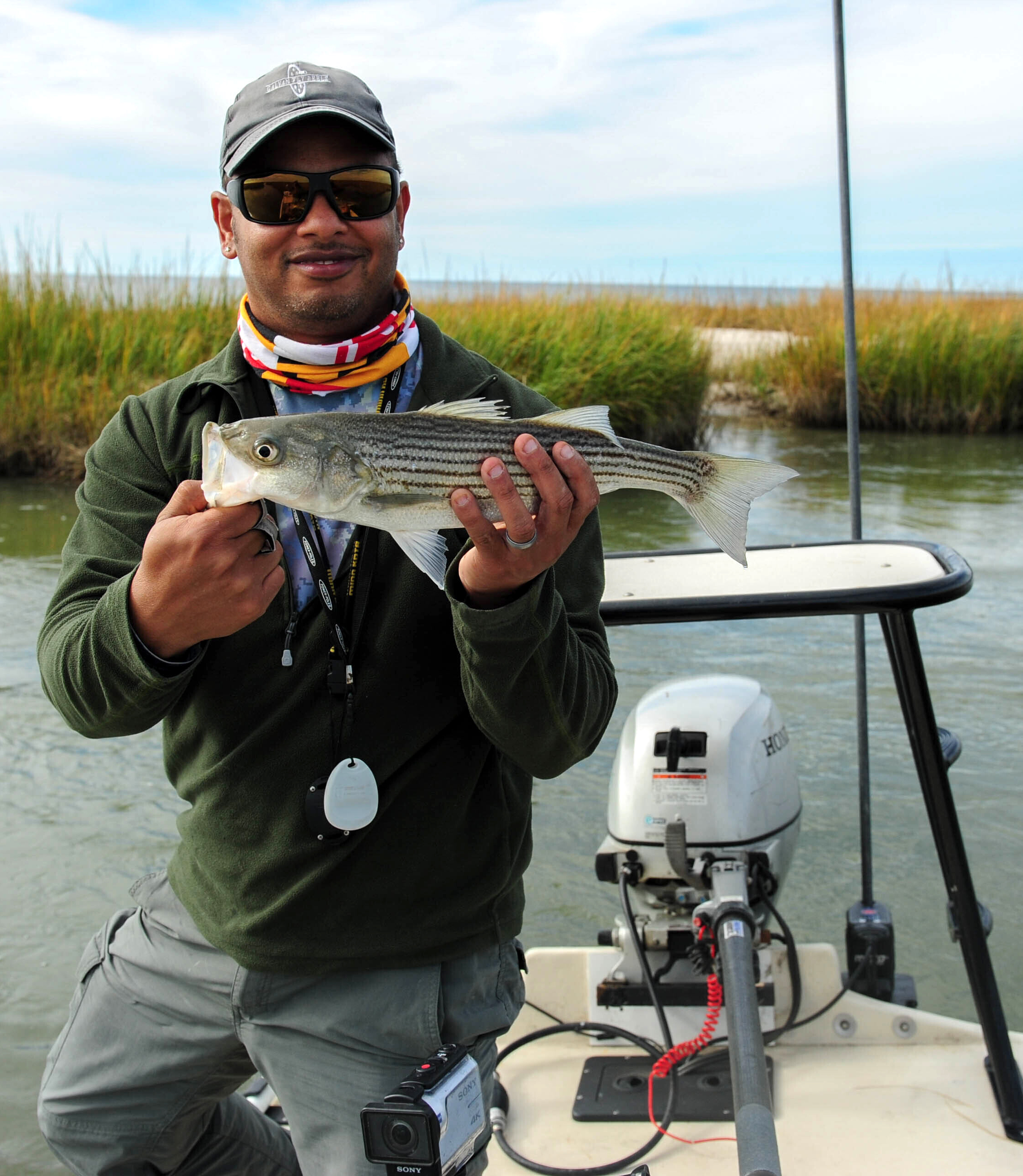
State Park.
Photo by Rich Batiuk
“We recognized there’s an opportunity for Maryland to draw in more fly fishers, not only residents but other people—to make Maryland a fly-fishing destination,” says Rich Batiuk, a fly fisher and conservationist from Annapolis. “It’s not Yellowstone, but what Maryland has to offer in its confines is, I think, unprecedented; within a two- or three-hour drive, for most Marylanders, you can have some phenomenal, but very, very different fly-fishing experiences.”
Batiuk and four other avid fly anglers developed Maryland’s Fly Fishing Trail, an itinerary for fly fishers that divides the state into five regions. A virtual roadmap to destinations, the trail website, fishandhuntmaryland.com/marylands-fly-fishing-trail, lists 48 suggested fly-fishing spots, two for each of the state’s 23 counties and Baltimore city. (Yes, urban fly fishing exists.) Each location’s description includes the what (fish species), when (seasons), where (site access details), how (fishing methods such as wading, boating or casting from shore) and who (instructors, guides and tackle purveyors).
In Maryland (aka “America in Miniature”), fly fishers can target dozens of species: wild brook trout in Garrett County’s mountain streams, scrappy smallmouth bass in the Upper Potomac River, perch and pickerel in a suburban Baltimore reservoir, largemouth bass and catfish in a defunct gravel mine-turned-lake near the nation’s capital, striped bass and flounder in America’s largest estuary, Chesapeake Bay, and even sharks and bonito in coastal waters. In other words, a little bit of what Montana, the Great Lakes, the mighty Mississippi, the Outer Banks and the Florida Keys have to offer anglers, all compressed in a state roughly half the size of Lake Michigan.
And you thought fly fishing was just about trout.
For all its mystique and aura of upper-crustiness, fly fishing remains the fundamentally simple pastime that it’s been for centuries. Its appeal is elemental; its implements almost primitive: a flexible rod, a weighted line and a homespun, non-sentient bait—the fly.
It’s a heck of a lot of fun and easier to grasp than you might imagine. I learned rudimentary fly fishing in a day from an instructor wearing a kilt. We weren’t in Scotland. There was no loch. Nor salmon. Our small class of novices matriculated knee-deep in the Patapsco River near Ellicott City, a bass fishery, three women in pants schooled by a man in a skirt.
Since that spring day years ago, I’ve enjoyed moments that every fly fisher savors; unfurling your line in a graceful loop toward its target; placing the fly—a feathery, furry baitfish or insect imitator—just so to attract a fish; and, when everything comes together, feeling the line in your fingers suddenly signal that you’re tethered to a creature that’s none too pleased to be hoodwinked.
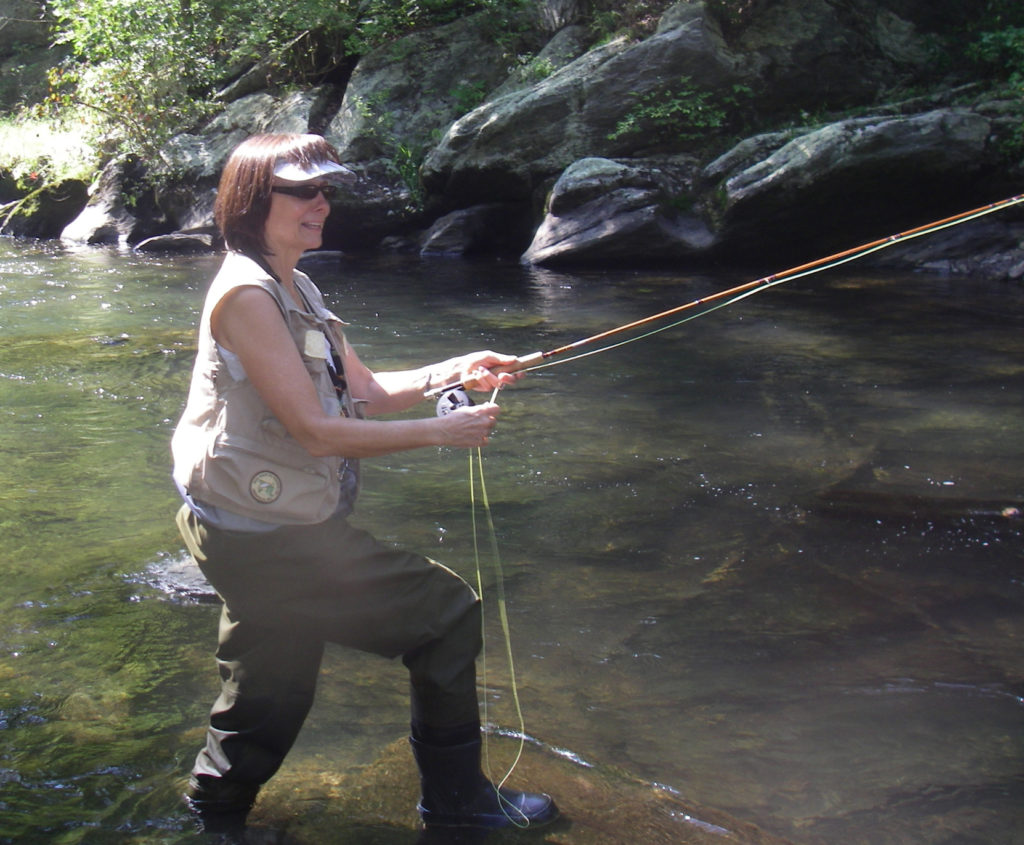
Photo by Amy Holstein
“As we say, the tug is the drug. It could be a little small thing, but you fooled it, and you felt it with a two-weight rod,” says Batiuk, referring to one of fly fishing’s most delicate rods. (Fly rods range in “weight” from 0 to 16, proportional to the weight of the line and, generally, the heft of the fish they can wrangle.)
Over coffee one afternoon, Batiuk explained to me why the group wanted to create a virtual trail, how they persuaded state agencies to make it happen and why passionate fly fishers are latter-day Izaak Waltons, rhapsodizing about fly fishing’s restorative nature, pastoral beauty and special camaraderie that’s spreading beyond the pastime’s traditional Anglo-Saxon male practitioners.
The idea was the brainchild of one John Neely, then head of the Maryland Sport Fisheries Advisory Commission. He broached the notion with Batiuk, a fellow member of the Free State Fly Fishers based in Anne Arundel County. They enlisted three other fly anglers and the Founding Five met over lunch in Annapolis two years ago to hash out details and a strategy for implementing what, as far as they could determine, was the first statewide trail for fly fishers. (A few states already have regional trails.)
“We were interested in a virtual trail, starting out with a website that would have stations on it and information,” Batiuk says. They received the blessing of two state agencies: the Department of Commerce, specifically its Division of Tourism, and the Department of Natural Resources and its recreational fishing division—the latter after assuring DNR officials they were seeking input from fisheries staff, not the agency’s endorsement of fly fishing over other sportfishing methods.
On September 24 last year, the virtual Fly Fishing Trail debuted on the Fish & Hunt Maryland website, an existing DNR-tourism partnership promoting outdoor sports and tourism in the state. The trail’s 48 sites represent only about one-tenth of those initially suggested by parks, counties and fisheries officials as well as local fly-fishing organizations.
“We ended up with over 400 locations across Maryland,” Batiuk says of the master list, a number far too great to make the project workable and site information sufficiently detailed. The Fly Fishing Trail Team, as the five organizers call themselves, worked to narrow the field. They applied specific criteria: public accessibility (on state, federal or local government land), diversity of fishable species, at least three-season fishing and access for the physically challenged. Batiuk says the group favored waters that weren’t already well known and targeted communities that weren’t already well represented (people of color, women and teenagers more into phone-scrolling than fishing).
“John and I both were very passionate about looking at ourselves, looking at fly fishing groups that we went out with,” Batiuk says. “We were a lot of older, white gentlemen. Not that there’s anything wrong with that, but what makes America beautiful is its diversity, whether it’s food or culture or perspectives. We wanted the same thing in fly fishing.”
Free State Fly Fishers had already been working with groups such as Outdoor Afro, which promotes outdoor recreation among African Americans. Women fly fishers were growing in numbers when I joined their ranks in the 1990s and, thanks to clubs such as Chesapeake Women Anglers, that trend has continued. And fly fishing is being introduced as therapy and diversion to those whose bodies and minds could use a boost: breast cancer patients (via Casting for Recovery), severely injured servicemen and women (The Wounded Warrior Project), traumatized veterans and first responders (Heroes on the Water) and foster children (The Mayfly Project).
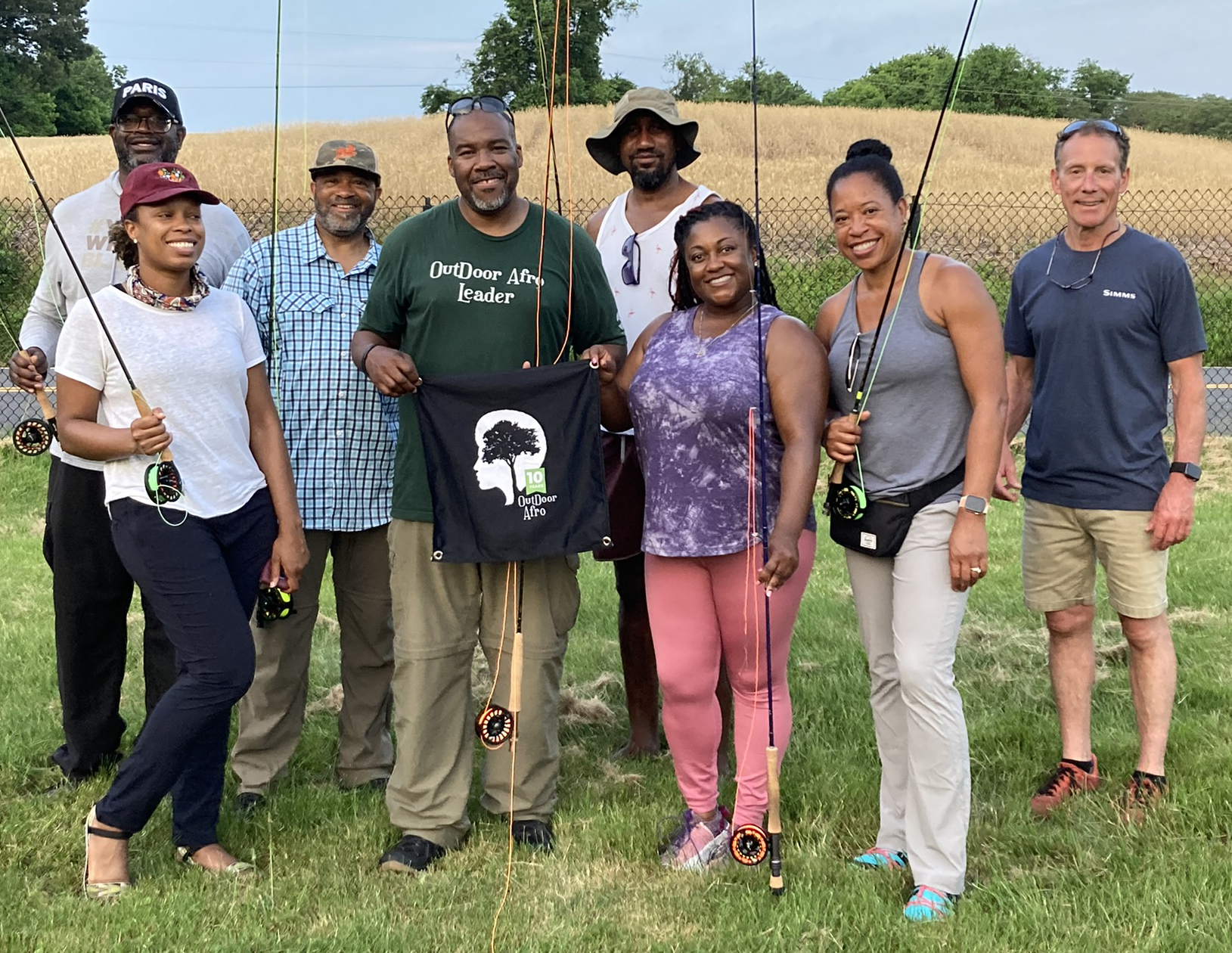
Photo by Rich Batiuk
And when COVID-19 affected us all, fishing—of any kind—inoculated us before Pfizer and Moderna came to the rescue. Sales of saltwater and freshwater fishing licenses to Maryland residents spiked in 2020, the first year of the pandemic, echoing a national trend as the virus-wary sought safe harbor outdoors. Before the newly angling-smitten can wriggle away, the nation’s fishing advocates developed a plan to keep them hooked. It’s called Recruitment, Retention and Reactivation (R3). Fly fishing is one of its components, with good reason.
An estimated 7.5 million Americans fly fished in 2021, according to a report last year by the Outdoor Foundation and the Recreational Boating and Fishing Foundation. That’s nearly 500,000 more than the pre-pandemic level and almost two million more than a decade ago. Fly fishing hasn’t been this popular since Brad Pitt and Montana’s mountain scenery made it fashionable 20 years ago in Hollywood’s adaptation of Norman Maclean’s novella A River Runs Through It.
If you’re not familiar with fly fishing, what sets it apart is the line. In most fishing, the weighted lure does the work of casting; the virtually weightless line simply rides along. In fly fishing, the weighted line propels lightweight lures (flies), and the angler does some fancy casting to make that happen. (Fishing’s equivalent of cowboy trick roping, but much easier to master.) And instead of reeling a fish in, fly fishers retrieve the line by hand (called “stripping”) to fetch their catch.
Fly fishers represent a smaller subset of Maryland’s anglers (it’s hard to know how small; the state sells trout stamps but does not offer special licenses for fly fishing), but they enjoy the same bonanza as other anglers: 50 some species of fish to pursue, more than 500 public water access sites and a half-million acres of public lands.
Between them, the five trail team members have fished every one of the trail’s sites, so they cast whereof they speak. Ask Batiuk about his favorite spots and you’ll appreciate two of fly fishing’s most compelling aspects, immersion in nature and that “tug-drug” appeal he speaks of.
He extolls the Eastern Shore’s tannin-stained upper Pocomoke River, where he kayak fishes and his wife, Susan, photographs their surroundings. “That place is just magical, especially that first mile or two. You’re almost waiting for a dinosaur to come out, or a six-foot winged dragonfly,” he told me. “We’re always sort of sad when the river starts to open up. I’ve caught largemouth bass, stripers, yellow perch, white perch, bluegills, different sunfish, pickerel. And the water’s so dark you literally don’t know what you have because you can’t see more than three to six inches down.”
He says another favorite is Janes Island, near Crisfield, where he fishes with a friend on the latter’s flats boat. “Some of my favorite memories are in Janes Island, catching that rising tide and falling tide. Redfish, speckled sea trout and flounder; I’ve caught all those guys casting the marshes. You see that undercut bank and then . . . you got it!” he says, setting an imaginary hook as we talked.
Some Chesapeake charter boats specialize in fly fishing. Captain Gary Neitzey, whose Fish Hawk Guide Service is based at Kent Narrows, says about 90 percent of his clients are fly fishers. Neitzey has been fly fishing since he was a kid, starting with a fly rod his mother bought with Top Value trading stamps. He used to shoe horses professionally until his back gave out and he switched to guiding.
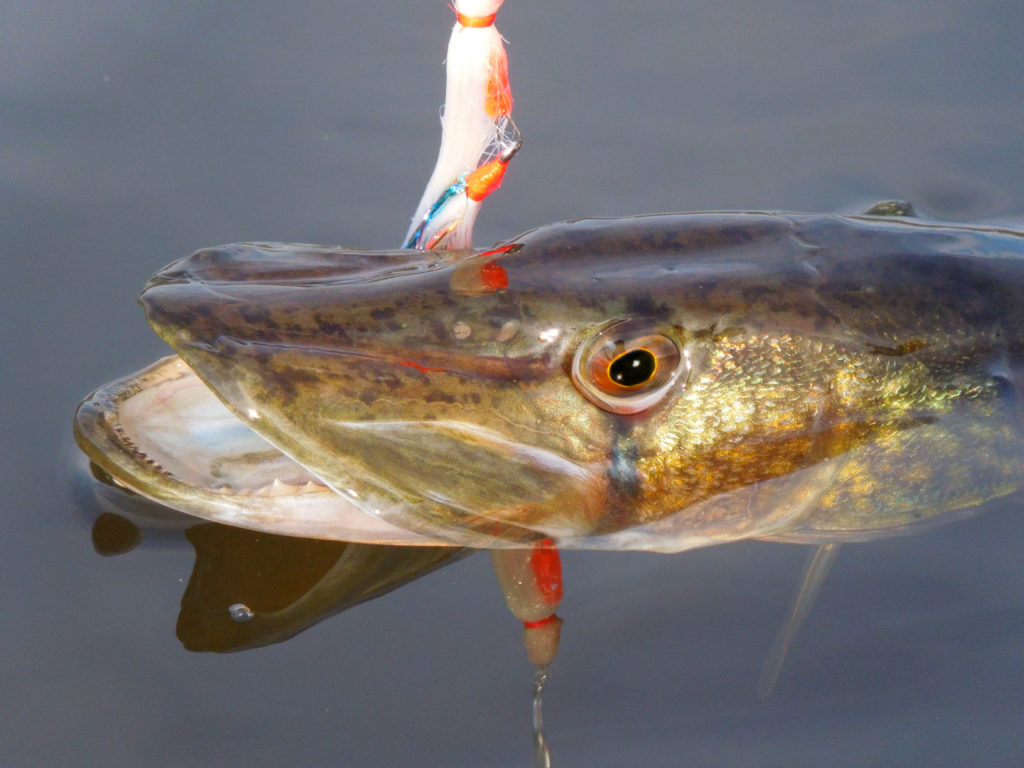
Photo by Joe Bruce
Fly fishing has become more popular in recent years, he says. “It kind of went through a lull for a while. I still have a lot of regulars who’ve been with me for 20 years, but there has been an increase in interest,” he says, notably from anglers in their 30s and 40s. He likes to run his 24-foot center-console into Eastern Bay and the mouth of the Chester River in search of striped bass and, occasionally, bluefish or Spanish mackerel.
Some of fly fishing’s biggest names have been Marylanders, including the man they called the Babe Ruth of fly fishing. The late Bernard “Lefty” Kreh, a Maryland native and a casting wizard, was an author, instructor and innovator. The famous saltwater fly he conceived for striped bass, Lefty’s Deceiver, remains a fly box standard and even earned a spot on a U.S. postage stamp.
Fly fishers following Maryland’s new trail can fish in Lefty’s bootsteps on the upper Potomac near Weverton Cliffs, where Kreh caught his first fish on a fly rod (a smallmouth bass) under the tutelage of another legendary Maryland fly fisher, Joe Brooks. The upper Potomac was one of two Maryland locations cited in Kreh’s book, Lefty’s Favorite Fly Fishing Waters, which highlighted 40 U.S. waterways. The other, the brown trout fishery at Gunpowder Falls, also appears on the Fly Fishing Trail.
Batiuk told me the trail team wants to add more features in the future: a printed map, additional website photos and videos, QR codes anglers can scan at each site to access the website’s detailed information and perhaps a “passport” that fly fishers could have stamped for every site they visit. “Maryland is small enough, geographically, that you could realistically do them all in one year,” he says of the 48 sites.
I’ve had my passport theoretically stamped at several trail waterways. I caught my first trout, a small brookie, on Big Hunting Creek, pausing to marvel at this silken, vivid thing in my hand before letting it go. I remember a blue heron watching from a nearby tree to see whether I caught anything worthwhile at Morgan Run. (Both of us were disappointed.) And I also got a lesson in spey casting—using both hands to cast a fly rod that, I swear, rivaled a telephone pole in length—at Thomas Point.
I haven’t fly fished for some years now, time and age having drifted us apart. But after listening to Batiuk, I’m ready to renew my acquaintance. I could start with a refresher course from one of the instructors listed on the trail website, or at a fly-fishing club clinic.
“Within a two- or three-hour casting clinic we’re able to get people getting the motion,” Batiuk says. “Get them out on the water a few times and they’ve got enough skill to do it.”
Fly fishing may soon reach underserved urban communities as part of DNR’s mobile fishing outreach program. Its First Catch Center trailer provides urban residents with fishing lessons and loaner tackle. “We’re hoping that maybe in the future we’ll do fly fishing,” says DNR’s Letha Grimes, who runs the program.
Batiuk says individual fly fishers are eager to help novices as well. “They have a tendency to want to teach and to share,” offering advice and sometimes even flies to newbies. “In fly-fishing, you’re not just casting a bobber in there or casting a lure, it’s the whole experience of getting into the environment. We always want to share that.”
The Fly Fishing Trail website lists tackle and fly shops that sell rods, flies and assorted basics such as waders, boots and vests. Most retailers, even high-end ones like Orvis and Patagonia, offer starter tackle kits at non-bespoke prices.
“You can be simple, or you can be like me; I’ve got rods from weight three to weight twelve,” says Batiuk, who was making his own fly rods as a high schooler. “What we don’t want to do is make [fly fishing] too complicated and scare people away. But if they’re interested and do want to do something different, they can have a lifetime blast with it.”
Access Maryland’s Fly Fishing Trail online HERE
There you’ll find a list of sites in each of Maryland’s 23 counties and Baltimore City, organized into regions to help you plan your fishing excursions.
CENTRAL REGION
In the Central Region, you might want to try hooking hickory shad on Deer Creek, which flows through Harford County to meet the Susquehanna River below Conowingo Dam. You can find a campsite for your tent or RV at Susquehanna State Park or posh accommodations in nearby Havre de Grace. Reserve a campsite at a Maryland state park at www.parkreservations.maryland.gov. Accommodations in Havre de Grace can be found at visitharford.com.
EASTERN SHORE
One of the prettiest sites listed is Turner’s Creek on the lower Sassafras River. This tidal creek’s waters hold bluegill, crappie, channel catfish, largemouth bass, striped bass, white catfish, white perch, yellow perch, chain pickerel, northern snakehead, and blue catfish. You can find accommodations in nearby Chestertown at
www.kentcounty.com.
CAPITAL REGION
The marshes of Jug Bay on the tidal portion of the Patuxent River flowing through Prince George’s County have a wide variety of fish that readily strike at fishing flies. It’s just a half-hour drive from Annapolis; find a place to stay at visitannapolis.org.
SOUTHERN MARYLAND
Go for the blue catfish, bluegill, crappie, largemouth bass, striped bass, channel catfish, white catfish, striped bass, white perch, yellow perch, carp and northern snakehead that swarm around the graveyard of sunken wooden ships at the National Marine Sanctuary at Mallows Bay on the Potomac River. The town of La Plata is about a half hour drive away from this remote site. Look for accommodations at www.explorecharlescounty.com.
Maryland native and award-winning contributor Marty LeGrand writes about nature, the environment and Chesapeake history.

